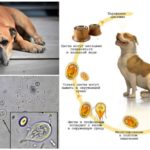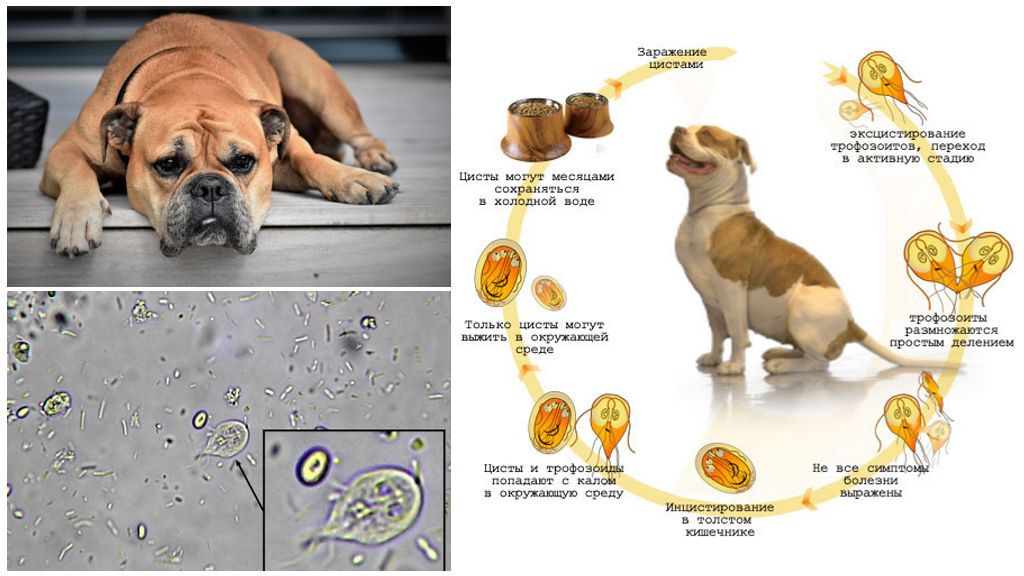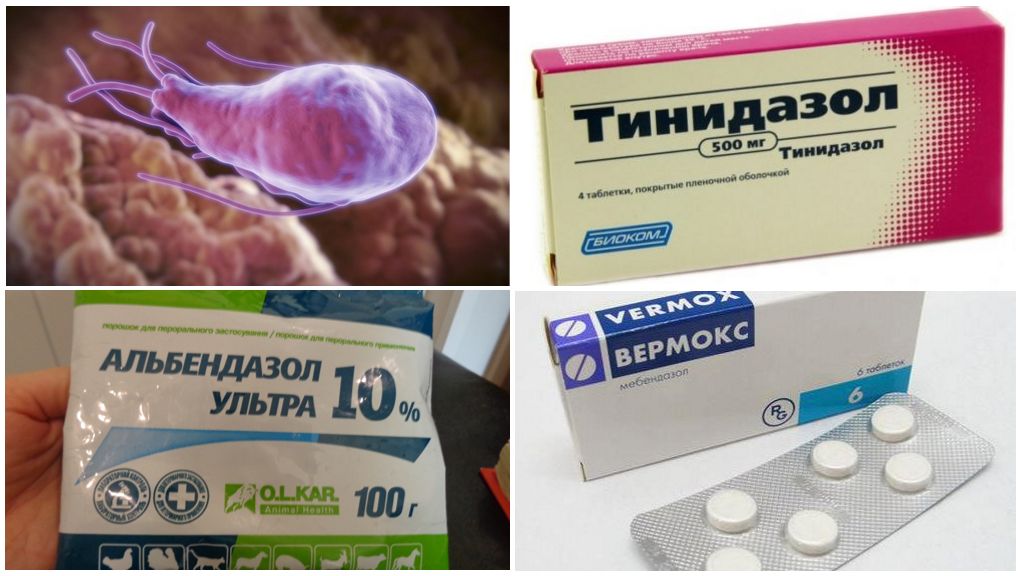Symptoms and treatment of Giardia in dogs
Content
- Giardia in dogs
- Treatment of Giardia in Dogs
Giardia in dogs are detected several times more often than in humans. This is due to the lifestyle of a pet, in which it often comes into contact with infected objects on the street. Giardiasis often proceeds hidden, which leads to difficulties in the diagnosis and neglect of infection.In order to recognize the presence of parasites in time and to carry out the necessary therapy, one should know how the disease manifests itself.
Briefly about Giardia
Lamblia in animals is called Lamblia canis. This is the simplest organism of the flagellated order. The parasite lives in the upper parts of the small intestine and in the duodenum of the dog.
A characteristic feature of Giardia is the ability to form cysts, which go into the external environment and then re-enter the body without being damaged. They open only in the intestines. Two adults hatch from them, and the schematic circle of the life cycle closes. Cysts persist in the external environment for up to 8 weeks, and water for up to 3 months.
Important!
Giardia are not worms, but simple organisms. Call giardiasis helminthiasis wrong.
Ways of infection
Infection of pets with giardiasis occurs when swallowing cysts. Adults (trophozoites) live in the soil do not fall, so they are safe. Infection of dogs contributes to:
- drinking water from puddles and standing bodies of water;
- eating food with particles of earth;
- licking the owner's dirty hands, on which there may be cysts;
- insufficient processing of tableware for feeding;
- close contact with stray puppies;
- licking wool after walking.
Important!
Cysts of the parasite fall on the soil in large quantities. If even one dog with giardiasis appeared on the court, in a few days it would infect a huge area of land. Therefore, in order to prevent infection, it is necessary to remove stool from areas of general walking and ensure that other breeders do the same. This will reduce the risk of spreading cysts, because the main route of transmission is fecal-oral.
Clinical picture
Symptoms of Giardia in a dog do not begin to appear immediately. The clinical picture develops gradually and goes through several stages. Detect giardiasis is most often possible in the second stage, when the parasites already cause disturbances in the body.
First stage (hidden)
It starts from the moment of infection and the beginning of the reproduction of protozoa. It is usually asymptomatic and lasts no more than 3 weeks. After this period, the body begins to secrete antibodies to the parasite and the animal shows signs of allergy or mild ailment.
Second stage (active)
Giardiasis begins to manifest itself brightly. The animal can not complain about the state of health, but its appearance and behavior change dramatically. The main symptoms that mark the owners:
- body itching, like with fleas;
- rejection of food and water;
- belching with bouts of vomiting;
- intestinal disorders (diarrhea, constipation);
- increased salivation;
- white plaque on the surface of the tongue.
During this period, Giardia already damages a significant part of the intestines and nutrients are sucked from the pet's body. At the same time, toxins enter the bloodstream and cause poisoning.
Third stage
Similar to asymptomatic, but much more dangerous. The dog begins to eat, drink, trying to lead an active life. But her body is depleted and is experiencing a shortage of vital elements. The animal looks emaciated, the hair loses shine, the nose is almost always dry.
At this time, the parasites actively proliferate and begin to penetrate the liver and other organs. It is necessary to treat the started giardiasis immediately. The sooner you start taking specific drugs, the greater the chance of restoring health.
Features of therapy
Symptoms and treatment of lamblia in dogs are not interrelated.In the absence of a clinic, a severe stage requiring serious therapy can be diagnosed. Giardiosis in puppies and adult animals is treated with antiprotozoal and anthelmintic drugs. These drugs have a detrimental effect on the simplest unicellular organisms.
To treat a dog for Giardia usually begin with Metronidazole or its analogues (Klion, Trichopol, Metrogil). The tablets are crumbled and mixed with food twice a day. For every kilogram of pet's weight you need an average of 20–22 mg of the drug. Therapeutic course 5 days. Side effects can manifest nausea and refusal to eat. If the condition does not return to normal, replace the agent.
Efficacy different tablets Tinidazole. They are dosed individually and administered once. The highest dose of 50 mg per kg animal weight.
For the treatment of puppies, it is better to choose agents based on albendazole (Worm, Nemozol). It is enough to give the pet 2 times (1 time per day) at a dose of 25 mg per kg of live weight. Albendazole has fewer side effects and is well tolerated.
Good results are given by the use of drugs intended for people in dogs. Most effective:
- Vermox;
- Tiberal;
- McMiror;
- Ornidazole;
- Mebendazole
Funds are appointed strictly by the veterinarian. The dosage is determined depending on the weight category of the dog and the stage of giardiasis.
On a note!
During the period of specific treatment, they additionally carry out a course of vitamin therapy and strengthen the immune system. It helps the animal to cope with the accompanying pathologies. Prevention pays special attention.
Can I get Giardia from a dog?
Experts in the field of veterinary medicine believe that such cases are extremely rare. In humans, another kind of microorganism called intestinal Giardia is parasitic. Therefore, a sick puppy is not dangerous for people. Lamblia are transmitted from it to man, only in the case of transfer of cysts of the genus L. Intestinalis on the paws and wool, which are not dangerous for themselves. But between animals, they can carry the infection through saliva and general feeding utensils.
Important!
A dog infected with Giardia canis is unable to infect humans, only animals of the same type can suffer.
Complications and effects of infection
With a long-lasting giardiasis, thinning of the intestinal walls occurs. The body stops digesting and assimilating food.Immunity dogs sharply declines. She begins to suffer all sorts of diseases that wear out her nervous system and organs. She suffers from allergies, persistent diarrhea and vomiting. Giardia in a pregnant dog can cause miscarriage or lead to premature birth.
Important!
Dogs rarely die from the Giardiasis itself. In most cases, the death of the pet leads to complications and consequences of mass invasion.
Conclusion
If the pet behaves inactive and weakens every day, it is recommended to donate blood for antibodies to parasites. It is advisable to determine the titer not only to lamblii, but also to helminths. Often, infection with these creatures occurs simultaneously. But for starters, you can just carry the feces to the veterinary clinic. Often, cysts can be found in the feces. Check dogs on Giardia regularly, regardless of the presence of pathological symptoms.









